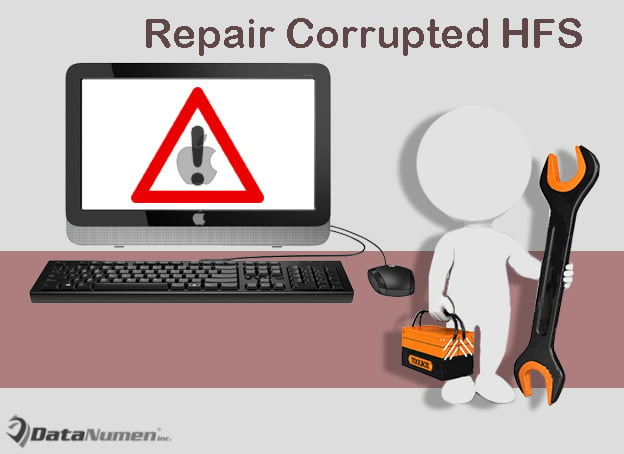If you find Hierarchical File System (HFS) volume inaccessible on your Mac, it’s very likely that you suffer the HFS corruption. This article will look at this issue and offer you 5 related solutions.
Hierarchical File System (HFS) is a proprietary file system of Apple, Inc. All the computers which run on Mac OS must being using this file system. Even though it is indeed robust in some degrees, it still cannot thoroughly immune from errors and corruptions. It can become inaccessible for various factors, such as improper hard drive formatting, damage of HFS partition, hardware failure and so on. All in all, once the file system gets corrupted, data stored on the HFS-based hard drive will be inaccessible definitely. So, here we will introduce you 5 effective solutions.

Moreover, here it’s also worth mentioning that it’ll be better if you have already backed up your data. For instance, if you have copied your PST file to an external hard drive, you will be able to restore your corrupted PST data from the backups. But if you have no backups, read on to utilize the following 5 tricks to rescue both the file system and your data.
1. Use Disk Utility
Disk utility is an in-built tool on Mac OS. It’s developed to settle the disk related tasks. Therefore, first of all, you can try this built-in utility.
- To start with, click the disk utility.
- Then click “Continue”.
- Next select the disk which you would like to repair from the sidebar.
- Subsequently, click “First Aid”.
- After that, if the utility detect out that the selected disk is to die, you’ll recieve a message that you will not be able to repair it. Also, you will be suggested to back up your data and replace the disk.
- But if not receive any message, hit “Run” to finish the repair process.
2. Use “diskutil” Command on Terminal
Provided that the disk utility fails, you can use this way – use “diskutil” command, trying to fix the disk issues from terminal. Follow the steps below:
- In the first place, open Applications folder > Utilities folder.
- Then launch the Terminal application.
- Next type “diskutil verifyVolume/[drive identifier]” and press “Return”.
- Subsequently, there will be two kinds of messages:
- No errors: It means the disk has no issues, so repair is unnecessary.
- Your Mac drive is corrupt and needs to be repaired: It means you should continue to repair the disk.
- If you receive the second message, you should input “diskutil repairvolume /[drive identifier]” to start repairing the disk.
3. Use FSCK (file system consistency check)
Assuming that the above two ways cannot make any effects, you can try this tip, which is using FSCK (file system consistency check).
- Firstly, press “Command + S” key buttons to when you hear the boot chime.
- Then your Mac will be booted in Single User Mode.
- Next, after the single user boot sequence complete successfully, you will see a small command prompt at the bottom with a hashtag.
- At that point, you need to input the “fsck – fy”.
- After it finishes, if you see a message – “File system was modified”, re-run the “fsck – fy”.
- Another message will show up – “The volume (name) appears to be OK”
- After that, you need to type “reboot” to leave the single user mode.
- Later boot your Mac into Mac OS.
- Finally you can use the “diskutil/verifyvolume” in Tip 2 to check if the disk is OK or not.
4. Use Third Party Volume Repair Tools
If unfortunately, your Hierarchical File System (HFS) is still inaccessible after the above 3 means, perhaps its corruption has exceeds what inbox utilities can do. In this situation, you can resort to third party volume repair tools. There are a great amount of such tools available in the market. You can choose one based on your actual needs.
5. Recur to Third Party Professionals
Perhaps you are afraid that your DIY repair will make some mistakes and cause further damage on the Hierarchical File System (HFS). Under this circumstance, it is suggested to take recourse to some third party professionals. You will be able to find many such expert services. But you should only trust in the reputable and experienced ones.
Author Introduction:
Shirley Zhang is a data recovery expert in DataNumen, Inc., which is the world leader in data recovery technologies, including corrupt sql and outlook repair software products. For more information visit www.datanumen.com